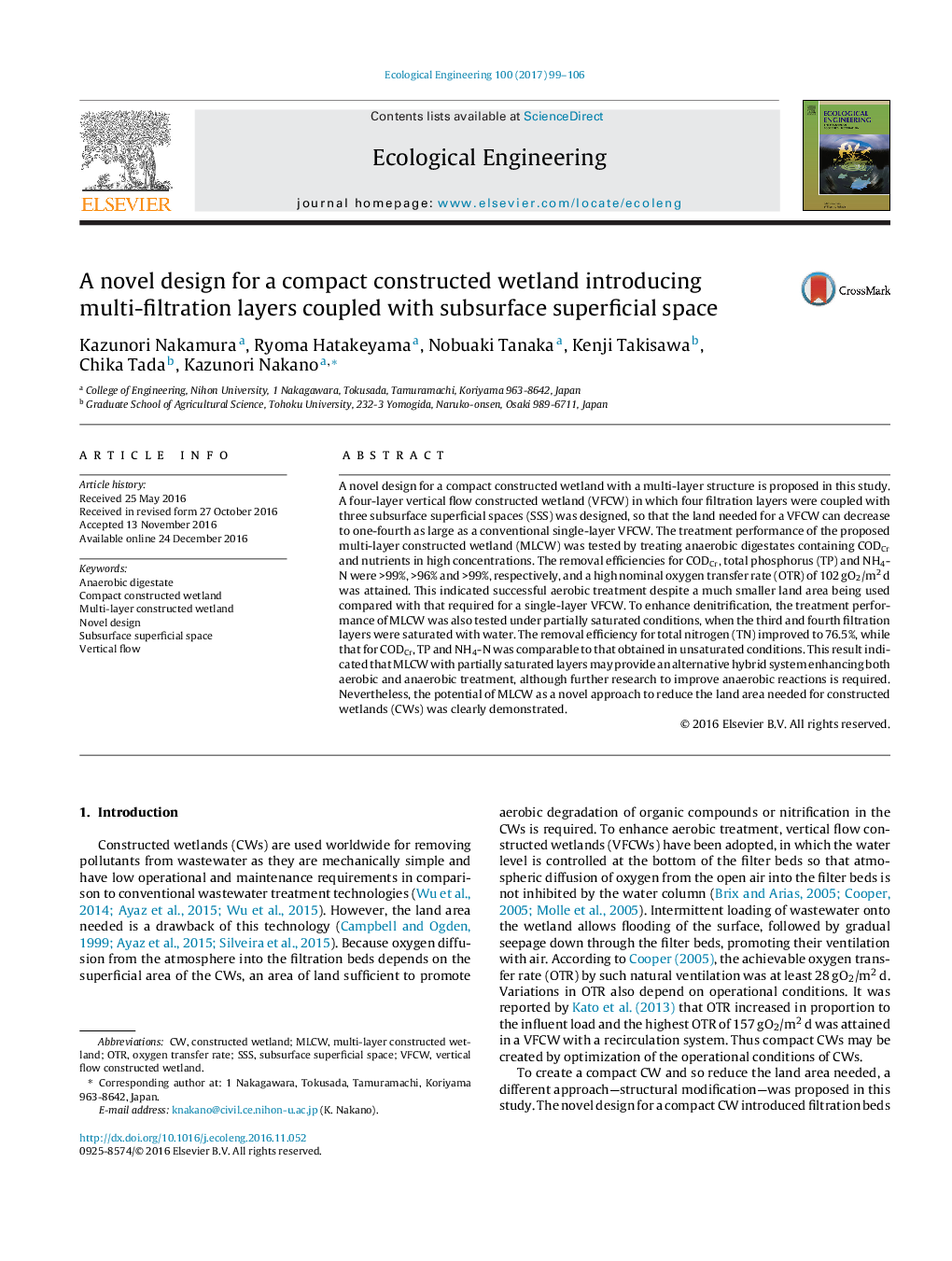| Article ID | Journal | Published Year | Pages | File Type |
|---|---|---|---|---|
| 5743710 | Ecological Engineering | 2017 | 8 Pages |
â¢A novel way of reducing the land area needed for CWs is clearly demonstrated.â¢A novel design for compact CWs with a multi-layer structure is proposed.â¢Successful aerobic treatment despite small land area being used was attained.â¢A high nominal oxygen transfer rate of 102 gO2/m2 d was attained in MLCW.â¢MLCW with partial saturation could enhance both aerobic and anaerobic treatment.
A novel design for a compact constructed wetland with a multi-layer structure is proposed in this study. A four-layer vertical flow constructed wetland (VFCW) in which four filtration layers were coupled with three subsurface superficial spaces (SSS) was designed, so that the land needed for a VFCW can decrease to one-fourth as large as a conventional single-layer VFCW. The treatment performance of the proposed multi-layer constructed wetland (MLCW) was tested by treating anaerobic digestates containing CODCr and nutrients in high concentrations. The removal efficiencies for CODCr, total phosphorus (TP) and NH4-N were >99%, >96% and >99%, respectively, and a high nominal oxygen transfer rate (OTR) of 102Â gO2/m2Â d was attained. This indicated successful aerobic treatment despite a much smaller land area being used compared with that required for a single-layer VFCW. To enhance denitrification, the treatment performance of MLCW was also tested under partially saturated conditions, when the third and fourth filtration layers were saturated with water. The removal efficiency for total nitrogen (TN) improved to 76.5%, while that for CODCr, TP and NH4-N was comparable to that obtained in unsaturated conditions. This result indicated that MLCW with partially saturated layers may provide an alternative hybrid system enhancing both aerobic and anaerobic treatment, although further research to improve anaerobic reactions is required. Nevertheless, the potential of MLCW as a novel approach to reduce the land area needed for constructed wetlands (CWs) was clearly demonstrated.
